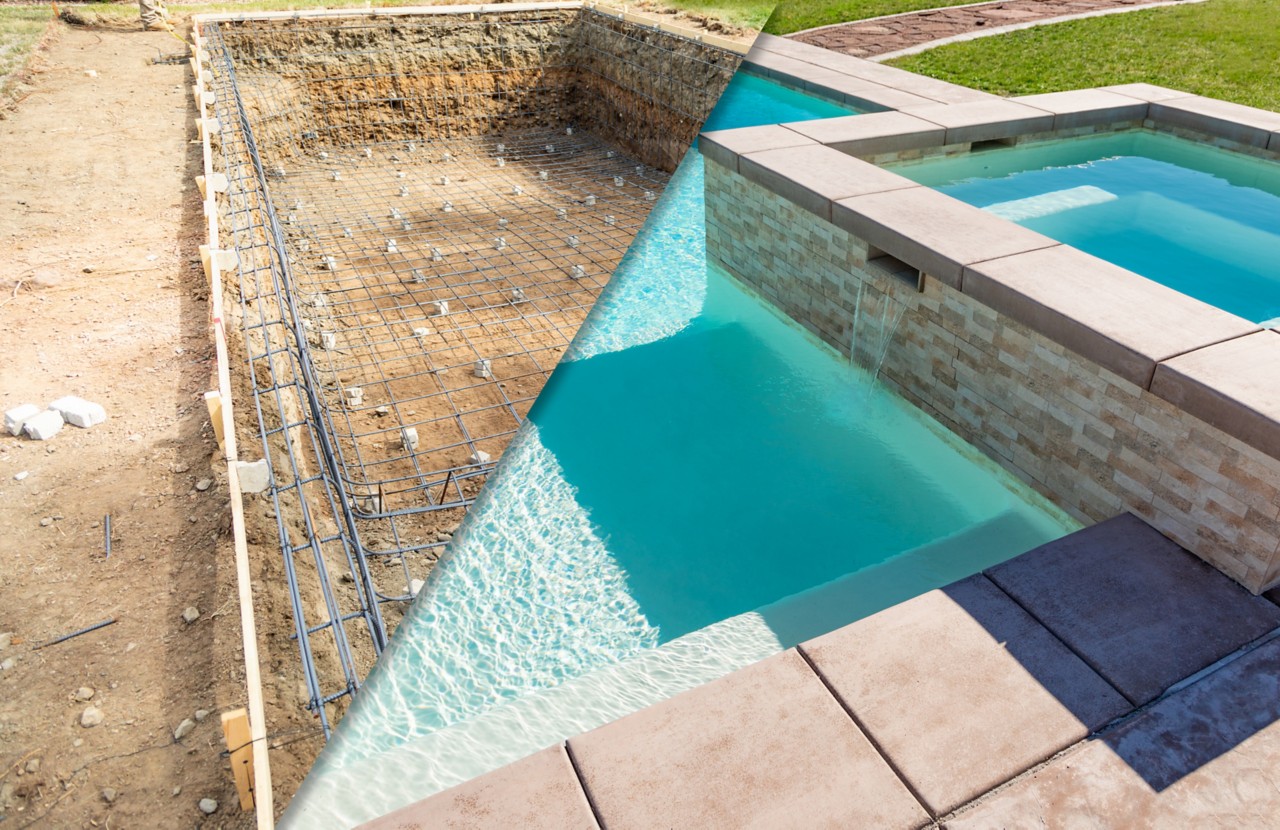- Home
- Education & Support
- Water Education Center
- Pool & Spa
- Pool Planning Checklist
Five Tips To update or build your pool
To plan for a new pool or updates, do your research and prepare your questions. Use these five steps to begin the building or renovation process for your ideal backyard paradise.
1. Start Planning
To begin, find a pool professional with reputable work experience. Your pool builder can provide insight into what it takes to make your dream pool come to life. It’s crucial the person you’re trusting to build or renovate your pool is licensed, insured and has excellent reviews from past customers.
When you are ready to interview pool builders, here are some questions you may want to consider:
- How many pools have you built?
- Can I see the pools you have built or renovated in person?
- Do you offer maintenance and cleaning services too?
Additionally, ask questions throughout the construction process. It is helpful to establish the best way to communicate with your builder so you can stay in close contact.
2. Set a budget!
As you continue doing your homework on local pool builders, begin forming your budget. When you meet with your builder, bring examples to your meetings so they can share past experiences and budgets related to the features you want to include in your pool.
New Builds
Before you build your dream pool, consider how much time and money you are willing to spend on the initial building cost and monthly maintenance.
Renovations
There are more affordable upgrades you can make to your pool, like upgrading your pool with more energy-efficient equipment to help you save money in the long run.
Don’t Forget About Maintenance
Remember to factor in monthly and seasonal maintenance costs like filter cleaning, pool water check-ins and assistance with heating your pool. If you live in an area with all four seasons, your pool can have additional opening and closing costs.
Note: The larger the pool, the greater the construction, heating and maintenance expenses. Make sure your pool size matches your monthly budget–even after construction is complete.
3. Choose Your Design
Are you leaning towards an above-ground or in-ground pool? Where you live and your budget may impact this decision. Inground pools will have higher renovation and up-front costs than above-ground pools.
Aboveground pools
Aboveground pool liners typically need replacing more frequently than an inground pool. However, aboveground pools require less maintenance in the long run due to their smaller size. You may need to consider additional pool design features like retaining walls or piers to build your pool. It is also essential to consider your terrain because you may need extra engineering for your pool to function at its best.
Inground pools
Factor in yearly costs like replastering your pool walls if you are leaning towards an inground pool. Whether you are starting from scratch or making updates to your pool, some areas to consider are:
- Implementing the right pool pump to keep your water moving and clean.
- Installing an energy-efficient pool heater to ensure your pool water is jump-in ready.
- Utilizing sanitation technology to keep your pool water in check.
- Incorporating LED pool lights can save you money and energy without impacting performance.
Another luxury you can add to your pool is an in-ground spa. While a luxurious addition, it is essential to establish how often you plan to use the spa before adding to your budget. Spas add additional utility costs, so make sure you factor in how frequently you heat up and use the spa.
4. SUSTAINABILITY ON THE MIND
Did you know a pool pump could be your home’s second-largest energy user, costing you as much as $720 in energy every year?* Several pool pump options offer energy savings without sacrificing top-performing benefits.
Selecting proper equipment can extend your swimming season and help reduce your energy bill. For example, incorporating solar panels to generate electricity for your installed heat pump could potentially heat your pool while the sun is on your solar panels with zero cost.
Ask your builder if your pool system will be hydraulically equal to ensure you’re getting the most bang for your buck. You’ll want to make sure the plumbing is big enough not to create friction when it moves water, making it as energy efficient as possible.
Hydraulically equal means your pool’s plumbing is large enough to reduce friction when moving water through your piping—allowing for a more energy-efficient flow of water to support your filtration and turnover rate.
5. Local Safety Guidelines
What are your state or province’s regulations about fencing around your pool? Do they require a built-in cover? Does your neighborhood association have specific rules regarding your pool? These are all critical questions to consider, and your pool builder should know the building codes required to meet the local standards.
It’s also important to know what’s under your backyard: is there a significant sewage line or electrical wire that will prevent you from building a pool? Before construction, check with your utility company to ensure you can install your pool in your desired location.
There is a lot to keep in mind when building or renovating a residential pool, but the reward is worth it. When carefully designed and maintained, pools provide fun and splash-filled memories with friends and families for years to come!
Disclaimer of Endorsement: The information provided on this website, blog, or advertisement does not, and is not intended to, constitute endorsement, affiliation, authorization, or recommendation by Pentair, its directors, or employees. This information is for general informational purposes only. It is the responsibility of the reader, user, or browser to verify the professional and services you intend to hire.
"Energy Efficient Pool Pumps." ENERGY STAR®


